Now, let’s break down those mysterious, high-tech sounding software terms into something you can actually use.
Imagine a dashboard where all your sustainability data comes together, enabling you to see your carbon footprint in real-time, or how efficiently resources are being utilized across the board—almost like having a radar for your business’s environmental practices! With features like data collection, compliance monitoring, and performance measurement, these tools empower even the smallest businesses to make informed decisions.
Plus, with a plethora of free tools available, even tight budgets shouldn’t hold you back.
When you’re weighing your options, think about what really matters: Do you want easy data collection? A user-friendly interface? Comprehensive reporting tools? These are not just fancy buzzwords—they are essential components that can help you transform data into actionable steps.
As we move forward, embracing these modern sustainability practices with the help of the right software isn’t just wise, it’s essential for thriving in today’s market.
So, gear up, get involved, and let’s make sustainability the new normal—because together, we can turn good intentions into real change!
Understanding Sustainability Management Software
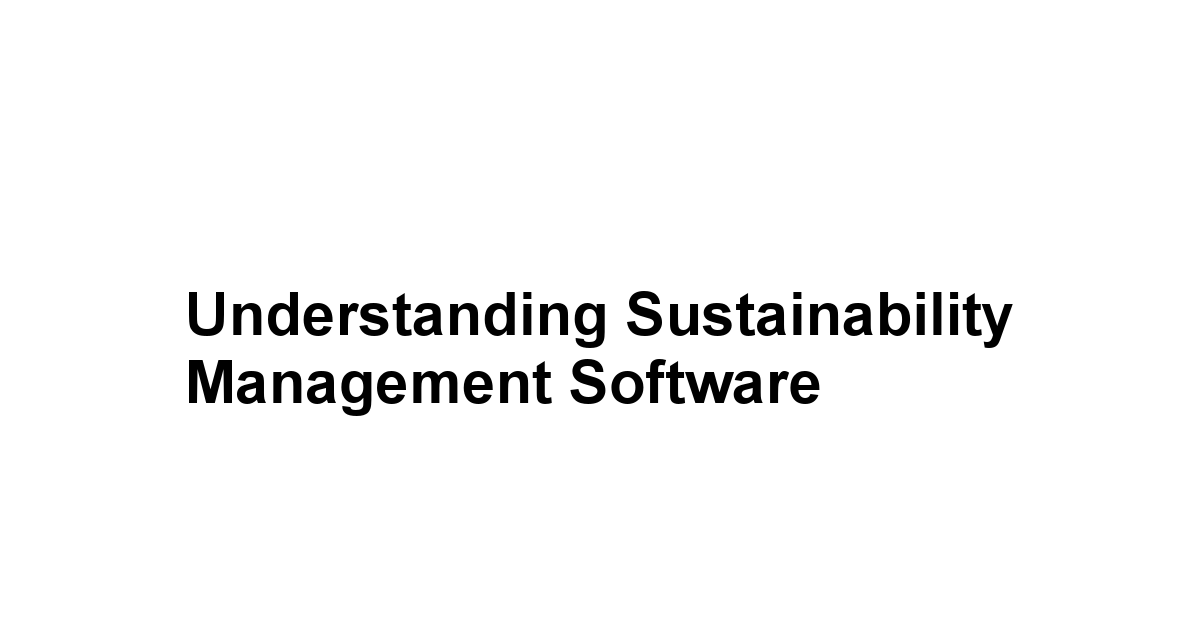
The software enables organizations to gather data, analyze trends, and create reports that reflect their sustainability performance, which is crucial not only for internal decision-making but also for demonstrating transparency to stakeholders.
According to a report by McKinsey, 70% of consumers are willing to pay more for sustainable brands, indicating that there is a tangible market demand for companies that prioritize environmental and social governance.
This evolution signifies that sustainability management software is not just a luxury for businesses but a necessary tool to remain competitive and ethical in today’s world.
What is Sustainability Management Software?
Such platforms typically encompass a variety of tools and functionalities designed to help organizations streamline their sustainability efforts.
There are usually three main components of sustainability management software: data management, performance measurement, and compliance monitoring.
Data management involves gathering and storing pertinent information regarding resource usage, emissions outputs, and supply chain impact.
Performance measurement utilizes this data to develop metrics that gauge effectiveness and highlight areas needing improvement.
Compliance monitoring ensures that the organization adheres to industry regulations and standards, thereby limiting legal risks and fostering a responsible corporate image.
Importance of Free Sustainability Management Tools
The importance of free sustainability management tools cannot be overstated, especially for small to mid-sized businesses that may find the high costs of advanced software prohibitive.
Free tools provide an invaluable entry point for organizations looking to implement sustainability practices without the burden of upfront expenditures.
Moreover, free sustainability management tools often serve as stepping stones for organizations to transition into more comprehensive and paid software solutions.
By utilizing these tools, companies can gain foundational insights into their environmental impact and establish a culture of sustainability that can thrive as the organization grows.
Features to Look for in Sustainability Management Software
Below is a comprehensive list of essential features that organizations should look for:
- Data Collection and Management: Ability to gather and organize data from various sources and streamline data entry processes.
- Activity Dashboards: Visual representations of key metrics that allow users to quickly assess sustainability performance.
- KPI Tracking: Tools to define and monitor key performance indicators related to sustainability goals.
- Reporting Tools: Capability to generate detailed reports that comply with regulatory standards and can be shared with stakeholders.
- Benchmarking: Tools for comparing performance against industry standards or competitors.
- Compliance Management: Features to keep track of regulations and ensure adherence to environmental laws.
- Collaboration Tools: Options for team members to work together on sustainability initiatives and share insights.
- Integration Capabilities: Ability to work alongside existing business software, ensuring seamless data flow and management.
By prioritizing these features during the selection process, organizations can position themselves for success in managing their sustainability efforts effectively.
Top Free Sustainability Management Software Solutions
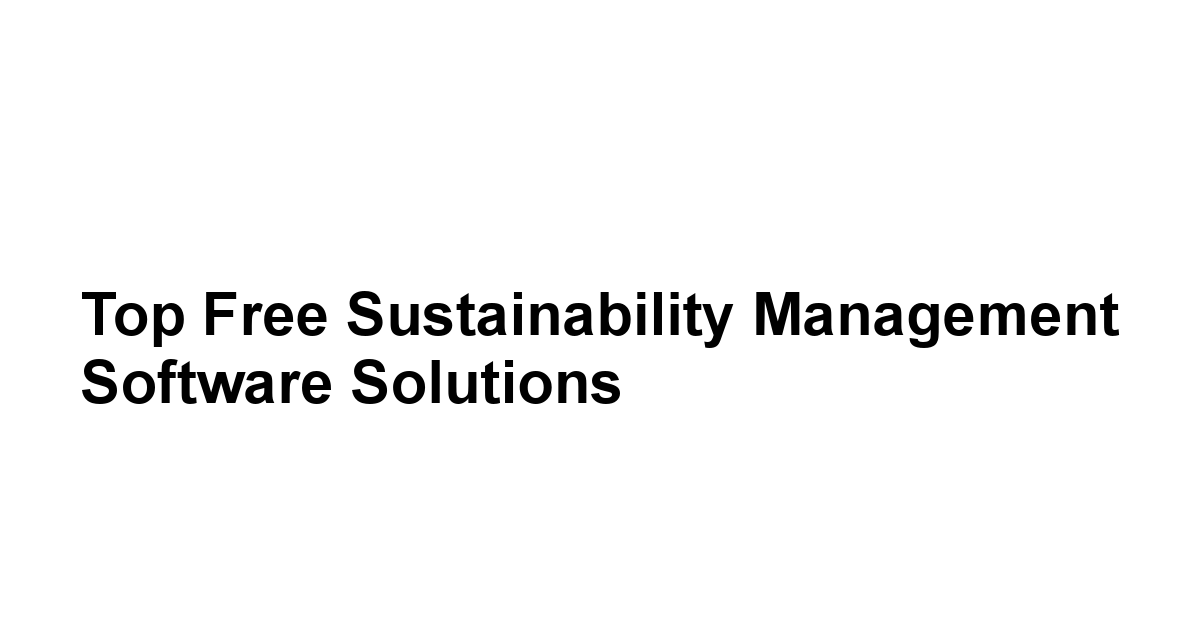
Overview of Popular Free Platforms
Each of the free tools available provides various functionalities.
Among the most popular are:
-
IntegrityNext: A cloud-based platform that offers comprehensive supplier monitoring for sustainability. It is well-received for its robust activity dashboard and supplier management features.
-
Quentic: This software focuses on digitizing sustainability and environmental management, ensuring compliance with multiple ISO standards.
-
Futureproof: A digital platform that assists in carbon measurement and reporting, along with enabling regulatory compliance.
-
One Click LCA: A life-cycle assessment tool that provides insight into carbon footprinting and overall sustainability.
-
Zelio: A platform that automates data collection related to corporate social responsibility and enables team collaboration on sustainability strategies.
Key Features of Each Software
When considering which platform to utilize, it’s crucial to understand the individual features that each software brings to the table.
Let’s take a closer look:
-
IntegrityNext
- Key Features:
- Emissions tracking and reporting
- Benchmarking capabilities
- Supplier engagement tools
- Integrated compliance management
- Key Features:
-
Quentic
- Customizable activity dashboards
- Compliance management with ISO standards
- Performance metrics tracking
- Stakeholder engagement solutions
-
Futureproof
- Carbon footprint measurement
- ESG reporting functionalities
- Automated compliance tracking system
- Stakeholder insights and engagement tools
-
One Click LCA
- Wide-ranging life-cycle assessment tools
- Integrated costs analysis
- Carbon benchmarking comparisons
- Circularity assessment functionalities
-
Zelio
- Automated CSR data collection
- Planning tools for CSR strategies
- Visualization of sustainability data
- Collaborative features for team engagement
These shared capabilities often allow organizations to optimize their sustainability practices and ensure clarity in their operations.
User Experience and Interface of Leading Tools
The user experience of sustainability management software can greatly influence how effectively staff can engage with the tools available.
Here’s a comparative glance at the user interface of some of the top free sustainability management software solutions:
| Platform | User Interface Design | Ease of Use | Notable Usability Features |
|---|---|---|---|
| IntegrityNext | Clean, minimalist | High | Intuitive navigation, rich dashboards |
| Quentic | Customizable | Moderate | Configurable templates for reports |
| Futureproof | Modern, user-friendly | High | Interactive data visualization |
| One Click LCA | Detailed options | Moderate | Step-by-step LCA guide |
| Zelio | Collaborative design | High | Easy sharing tools for collaboration |
Each platform presents unique advantages and best practices for engaging users, ensuring that organizations can maximize their sustainability efforts.
Essential Features of Effective Sustainability Management Software
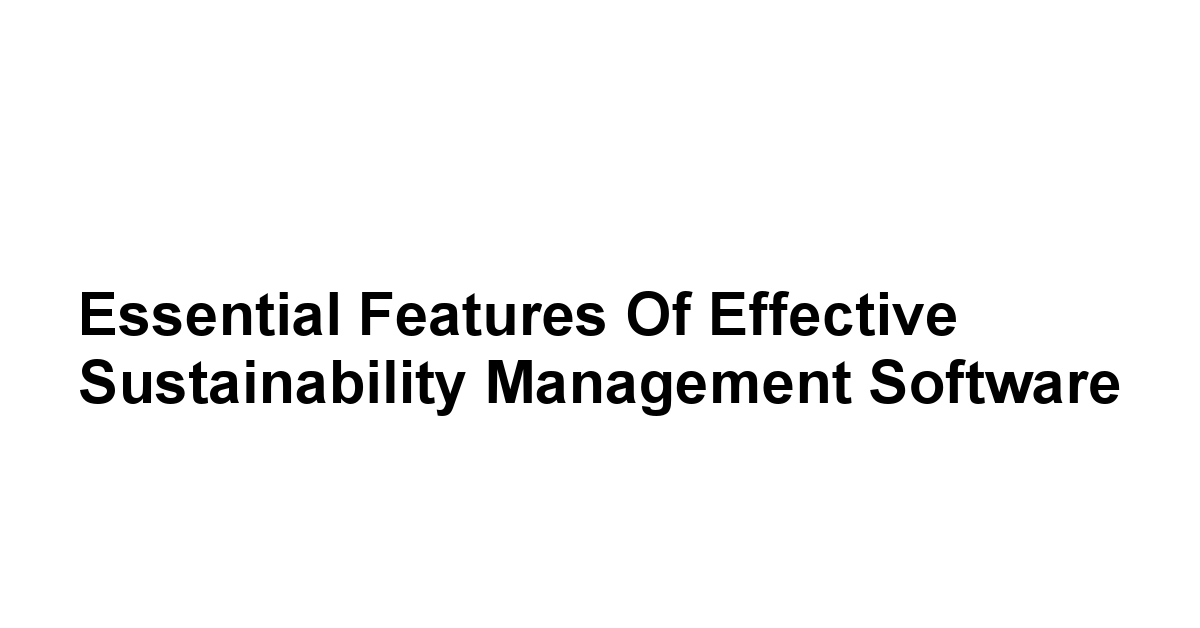
Activity Dashboards: The Heart of Monitoring
Activity dashboards are integral to sustainability management software, serving as the hub for real-time monitoring of key performance indicators KPIs. A well-designed dashboard enables an organization to maintain visibility over important metrics such as carbon footprints, resource consumption, and process efficiencies.
- Key Components of Effective Dashboards:
- Real-time data updates that keep information current.
- Visualization capabilities that convert numbers into easily digestible graphics.
- Customization options allowing users to focus on relevant KPIs tailored to their sustainability goals.
In practice, it helps teams quickly identify trends, assess impacts, and adjust strategies accordingly.
Reporting and Analytics: Data-Driven Decisions
Reporting and analytics features help organizations translate raw data into meaningful insights.
- Benefits of Robust Reporting and Analytics:
- Compliance with local and international regulations through standardized reporting formats.
- Enhanced decision-making driven by analytical insights on performance.
- Ability to track improvements over time through historical data comparisons.
Compliance Management: Staying Within Regulations
A vital component of any sustainability management software is its compliance management capabilities.
- Characteristics of Effective Compliance Management Features:
- Comprehensive checklists that align with applicable environmental regulations.
- Automated compliance tracking and alerts to keep teams informed.
- Documentation support for audits and reviews to facilitate transparency.
How to Implement Sustainability Software in Your Organization
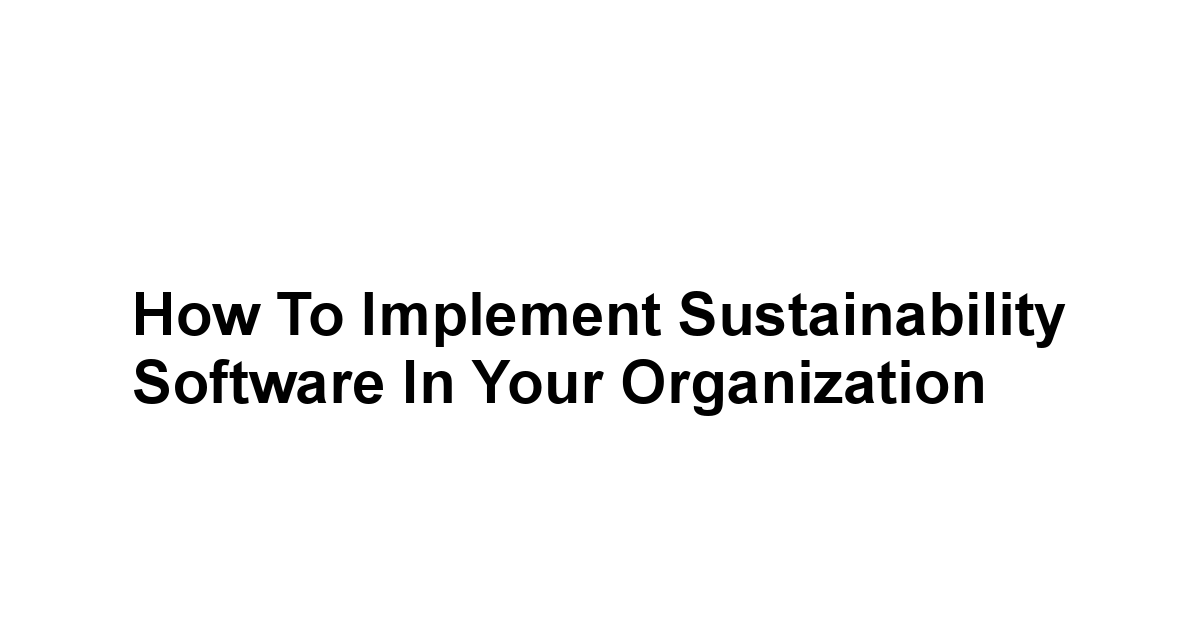
By following structured steps, organizations can seamlessly transition to more sustainable practices while leveraging available tools.
Steps to Get Started with Free Tools
To kickstart your organization’s sustainability management journey using free tools, take the following steps:
- Assess Current Sustainability Practices: Identify areas for improvement and gather existing data on resource usage, emissions, and overall sustainability initiatives.
- Select Appropriate Software: Research various free sustainability management platforms that cater to your specific needs. Consider the features that align with your sustainability goals.
- Conduct Preliminary Training: Organize introductory sessions for team members to familiarize them with the selected software’s functionalities.
- Define Objectives and KPIs: Set clear objectives that you wish to achieve through the software, including quantifiable KPIs for progress tracking.
- Implement the Software: Begin using the software to collect and analyze data relevant to your sustainability efforts.
- Monitor and Adjust as Necessary: Regularly review your performance against the established KPIs and make necessary adjustments to optimize outcomes.
By taking these steps, organizations can create a strong foundation for managing their sustainability initiatives effectively.
Best Practices for Successful Implementation
Drawing from experience, here are some best practices that can lead to a successful implementation of sustainability software:
- Stakeholder Engagement: Involve employees and other stakeholders from all levels of the organization early in the process. Their input can help shape the implementation strategy effectively.
- Focus on Change Management: Anticipate potential resistance to change and address it through clear communication about the software’s benefits.
- Establish a Sustainability Team: Formulate a dedicated team responsible for overseeing the implementation, monitoring progress, and ensuring accountability.
- Utilize Training and Support Resources: Leverage all available online resources, tutorials, and community forums connected to the software for training and troubleshooting.
- Regular Feedback Mechanism: Solicit regular feedback from users on the functionality of the software to adapt and refine usage.
Embracing these best practices can enhance stakeholder buy-in and streamline the sustainability software integration process.
Engaging Stakeholders in the Sustainability Journey
When employees feel included in the sustainability conversation, they are more likely to contribute positively to the overall outcomes.
- Strategies for Stakeholder Engagement:
- Regular Communications: Share updates, achievements, and challenges related to sustainability initiatives through newsletters or all-hands meetings.
- Incorporate Gamification: Implement friendly competitions among teams regarding sustainability goals to promote engagement and motivation.
- Gather Input Through Surveys: Solicit ideas and feedback from various levels of staff regarding sustainability practices, further cultivating a sense of ownership.
- Recognition Programs: Celebrate noteworthy contributions to sustainability through recognition programs that highlight individual and team achievements.
By actively engaging stakeholders, organizations can harness the collective effort towards achieving their sustainability goals.
Measuring the Effectiveness of Your Sustainability Efforts
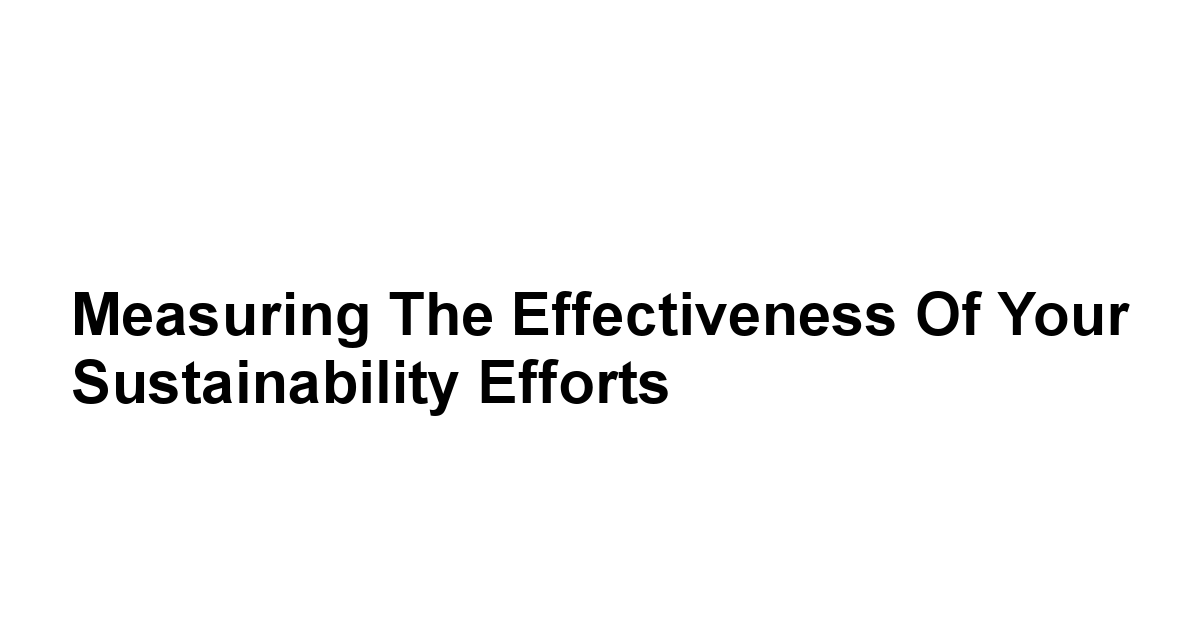
To truly understand the impact of sustainability initiatives, it is crucial to measure effectiveness regularly.
This allows organizations to assess whether they are en route to achieving their goals or if adjustments are needed.
Setting Key Performance Indicators KPIs
Setting KPIs is foundational to measuring and managing sustainability performance effectively.
KPIs help translate sustainability goals into quantifiable measures, providing critical insights into performance.
- Steps to Establish Relevant KPIs:
- Identify strategic sustainability goals that align with organizational objectives.
- Gather baseline data to understand current performance levels.
- Develop specific, measurable, achievable, relevant, and time-bound SMART KPIs that can be tracked over time.
Examples of effective sustainability KPIs might include:
- Reduction in energy consumption kWh per product produced.
- Percentage decrease in waste sent to landfills.
- Improvement in water use efficiency liters per unit produced.
By setting meaningful KPIs, organizations can create benchmarks that inform progress and inspire action.
Tracking Progress Over Time
Tracking progress is essential to ensure transparency and accountability in sustainability efforts.
Regularly reviewing KPIs helps organizations understand performance trends and areas for improvement.
- Techniques for Progress Tracking:
– Use dashboards within the sustainability software to visualize progress on KPIs.
– Schedule regular reporting intervals monthly, quarterly, annually to review data and discuss findings with stakeholders.
– Maintain historical data to analyze performance over time, identifying both successes and shortcomings in sustainability goals.
A structured approach to progress tracking fosters a culture of continuous improvement, allowing organizations to adapt and innovate based on the insights gathered.
Continuous Improvement and Software Upgrades
- Approaches to Encourage Continuous Improvement:
- Foster a culture of innovation where staff feel empowered to share ideas for improving sustainability practices.
- Prioritize technology upgrades to ensure that software tools remain cutting-edge and capable of supporting organizational needs.
- Conduct regular training sessions to keep staff updated on new sustainability practices and software features.
According to a 2021 report from the Cambridge Institute for Sustainability Leadership, organizations that prioritize continuous improvement in sustainability report an average of 48% better performance over three years compared to their peers.
Future Trends in Sustainability Management Software
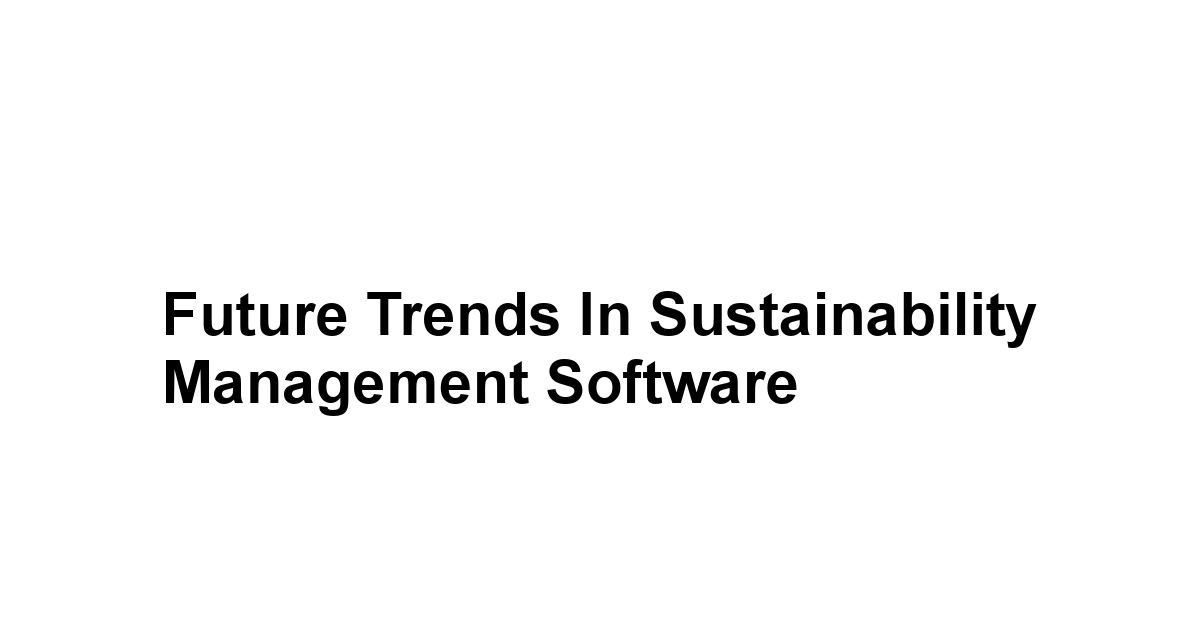
As sustainability becomes more integral to business strategy, several emerging trends influence the development of sustainability management software.
Organizations that keep abreast of these trends will be better positioned to adapt to new opportunities and challenges.
The Rise of AI in Sustainability Tools
Artificial Intelligence AI is transforming the way organizations approach sustainability management.
By leveraging AI technologies, businesses can analyze vast amounts of data to identify patterns and make predictions for more informed decision-making.
- Benefits of AI Integration:
- Enhanced data analysis capabilities that provide deeper insights into sustainability performance.
- Automated reporting and risk assessments that save time and reduce human error.
- Predictive modeling that can simulate potential outcomes based on various sustainability strategies.
A 2023 study by the World Economic Forum predicts that incorporating AI in sustainability management can increase efficiency by up to 80%, showcasing the profound impact of technology on environmental initiatives.
Integration with Other Business Systems
Sustainability management software increasingly needs to integrate seamlessly with other business systems, such as supply chain management, human resources, and financial software.
- Advantages of Integrated Systems:
- Streamlined communication across departments that enhances collaboration towards sustainability goals.
- Holistic views of organizational performance that incorporate sustainability metrics alongside other business-critical data.
- Enhanced data accuracy through shared platforms that reduce duplication and inconsistencies.
According to Salesforce, integrating sustainability efforts with other business systems can boost overall operational efficiency by 30%, elevating the importance of interconnected software solutions.
The Growing Importance of Data Security
With the increasing reliance on digital tools for managing sustainability, data security has emerged as a critical concern.
- Strategies for Enhancing Data Security:
- Implement robust cybersecurity measures, including encryption and access controls tailored for sensitive information.
- Regularly update software to protect against vulnerabilities, ensuring that data security protocols are current.
- Provide training for all employees on best practices for data handling and security.
Research from IBM indicates that 67% of organizations expect data security to be a top priority in their sustainability strategies over the next five years, underscoring the growing recognition of the importance of protecting against data breaches.
Conclusion: The Value of Choosing the Right Sustainability Software
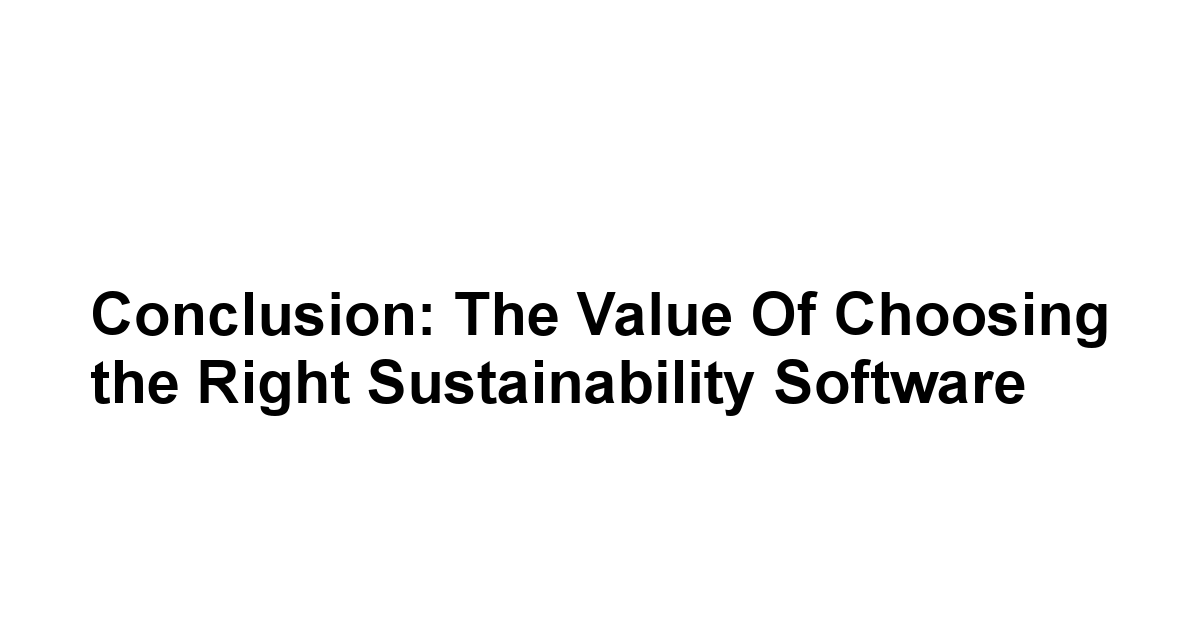
Investing in Sustainable Practices
In today’s world, choosing the right sustainability management software can significantly bolster an organization’s ability to achieve its environmental goals.
By investing time and effort into selecting tools that align with sustainability objectives, businesses can augment their processes and ultimately transform their impact on the environment.
Encouragement to Explore Free Options
For organizations hesitant about initial investments, exploring free sustainability management options can provide a solid foundation.
Final Thoughts on the Journey to Sustainability
By adopting effective software solutions and engaging with employees and stakeholders, organizations can establish a legacy of sustainability that transcends mere compliance and fosters genuine societal and environmental stewardship.
Conclusion
Embracing the journey of sustainability in today’s corporate world is not just about following the latest trends, it’s about making informed, impactful decisions that resonate with both the environment and society.
As organizations sift through the myriad of options available, the importance of selecting the right sustainability management software stands out distinctly.
Choosing tools that not only track and report on sustainability initiatives but also enhance communication, foster transparency, and encourage collaboration can significantly boost a company’s overall effectiveness.
It’s like locating the perfect pair of shoes for a marathon, wearing the right ones can mean the difference between stumbling and crossing that finish line with pride.
For many businesses, especially those just starting their sustainability journey, the initial cost of advanced software can feel overwhelming.
Fortunately, the emergence of robust free sustainability management solutions provides an accessible entry point for smaller organizations.
These tools allow businesses to start measuring their environmental impact without the weight of significant financial investment.
They can gather essential data and develop early insights that instill a culture of sustainability.
As many experts suggest, starting small can lay the groundwork for larger, more sophisticated initiatives down the line, positioning companies to scale their efforts as they grow.
Let’s not forget that the path to sustainability is not a one-time event, it’s a dynamic journey filled with learning, growth, and sometimes a few bumps along the way.
Transparency in sustainability initiatives builds trust with stakeholders, and as businesses harness the power of the right software, they not only track their achievements but also communicate them effectively.
After all, who doesn’t love a good success story? By setting clear Key Performance Indicators and regularly assessing progress, organizations can not only celebrate milestones but also identify areas ripe for improvement, turning each evaluation into a stepping stone for further advancement.
As we look towards the future, the overarching message is clear: sustainability management software is not just a tool, it’s a catalyst for change.
Whether it’s leveraging free solutions, engaging stakeholders meaningfully, or continuously improving through insights and analytics, the possibilities are as limitless as the sky.
In a world where consumers are increasingly prioritizing sustainability, organizations that harness the potential of these tools will not only thrive economically but also contribute positively to our planet.
So here’s to being optimistic about our collective journey into a sustainable future—because every small step counts, and together we can make a significant impact!
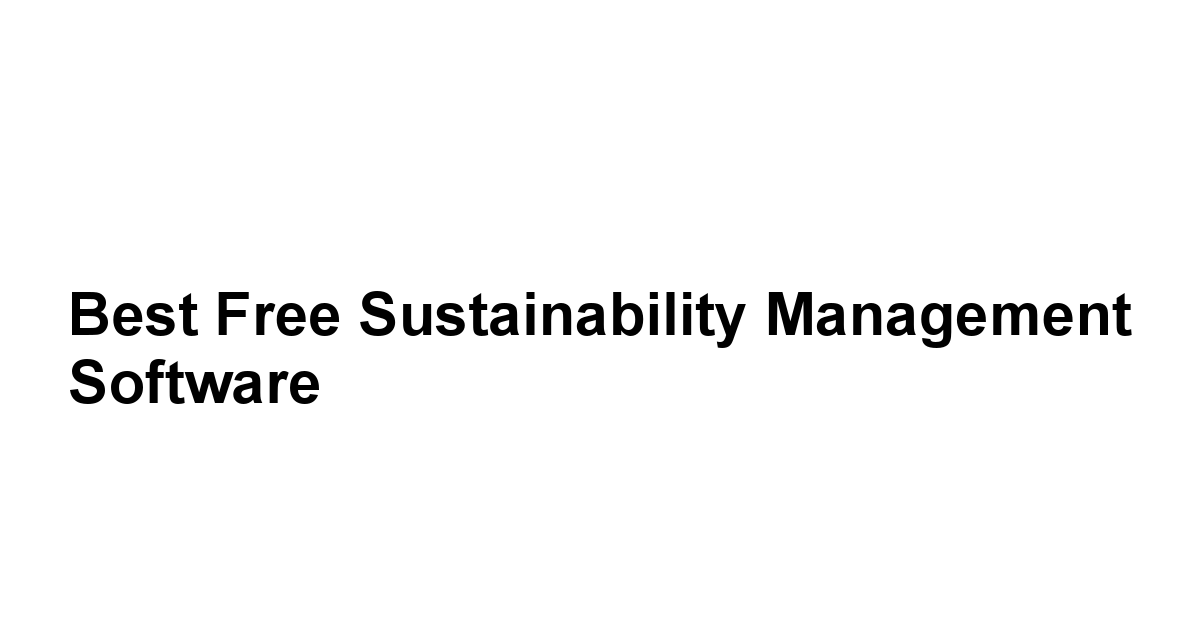




Leave a Reply